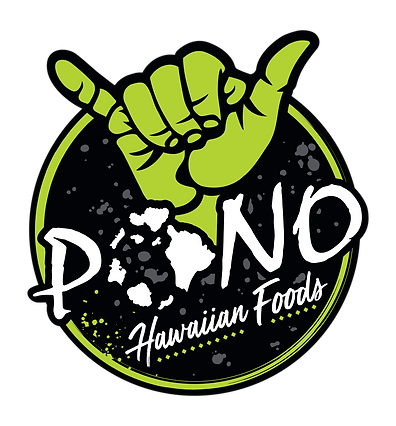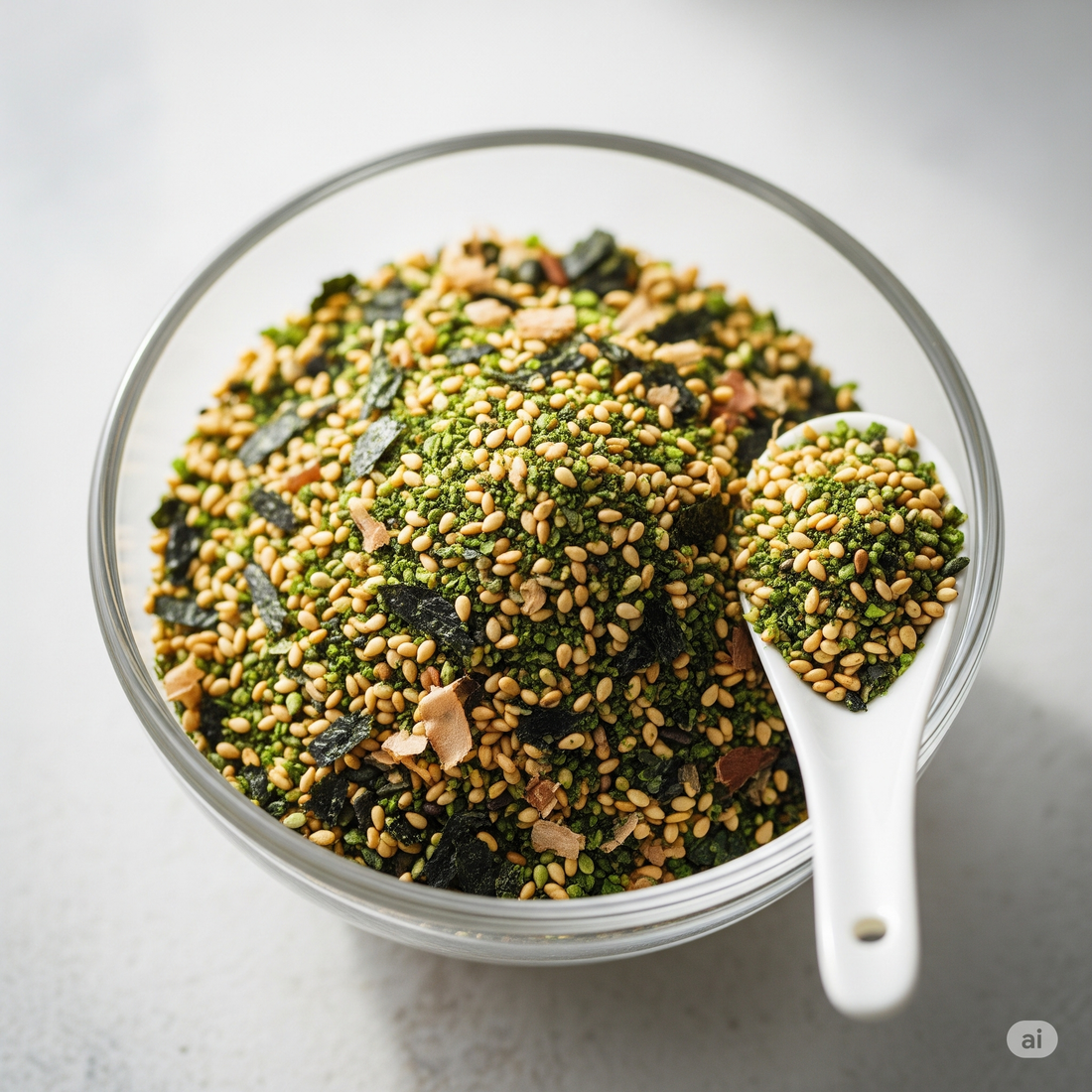Assume all Furikake is gluten-free because it’s just seaweed and sesame? Not quite—there’s more you need to check before you sprinkle.
Furikake is a flavorful Japanese seasoning blend often used to add crunch and umami to rice, noodles, and more. While the base ingredients—like dried seaweed, sesame seeds, salt, and sugar—are naturally gluten-free, many store-bought versions include hidden sources of gluten you might not expect.
Soy sauce powder, vague flavoring agents, or additives like MSG blended with wheat starch can easily sneak in, especially in traditional Japanese blends. If you're following a strict gluten-free diet or shopping for a child with dietary restrictions, that small sprinkle could cause a big issue.
In this blog, we’ll walk you through how to read ingredient labels, what red flags to watch for, and how to choose truly gluten-free Furikake. Whether you're buying online, at an Asian grocery store, or making your own at home, this guide will help you sprinkle with confidence.
What is Furikake made of?
Furikake is a Japanese seasoning blend traditionally used to add flavor and texture to rice. While recipes can vary, the most common ingredients include toasted sesame seeds, dried seaweed (nori), salt, and sugar. Some versions also contain dried fish flakes (like bonito), egg granules, miso powder, or dried vegetables for extra umami.
What sets Furikake seasoning apart is its versatility—each blend brings a unique taste profile, from mild and nutty to bold and savory. Modern variations often include soy sauce powder, wasabi, or even dehydrated wasabi peas for a spicy crunch.
Though it may look simple, Furikake is carefully balanced to add instant flavor without overwhelming the dish. It’s usually dry and shelf-stable, making it a pantry staple in many Japanese households and increasingly popular in kitchens around the world.
Is Furikake gluten-free?
Furikake can be gluten-free, but not always. While basic ingredients like sesame seeds, seaweed, salt, and sugar are naturally gluten-free, many store-bought blends include added flavorings that may contain gluten. One common example is soy sauce powder, which often includes wheat.
If you follow a gluten-free diet, look for certified gluten-free Furikake. This is the easiest way to ensure the product meets safety standards. Brands like Eden Foods offer gluten-free Furikake options, but always double-check the label to be sure.
You can spot safer options by checking the ingredient list—avoid vague terms like “seasoning,” “flavoring,” or “spices,” as they can sometimes hide gluten. If the package doesn’t clearly say Furikake is gluten-free, it’s best to choose one that does.
When shopping at Japanese grocery stores or online, use trusted websites that list full ingredients or offer filters for dietary needs. Imported products may not follow the same labeling rules, so take extra care when reading packaging.
When is Furikake not gluten-free?
Furikake might seem safe at first glance, but not all blends are gluten-free. One of the most common hidden sources of gluten is soy sauce powder, which often contains wheat. It’s frequently added to enhance flavor, but unless it’s specifically labeled gluten-free, it can be a risk for those with gluten sensitivity or celiac disease.
Another ingredient to watch out for is MSG or flavoring agents mixed with wheat starch. These vague ingredients may not clearly mention gluten, but can still trigger reactions. There’s also the issue of cross-contamination during manufacturing.
Even if the main ingredients are gluten-free, they could be processed on shared equipment with wheat products, especially in large factories. Keep in mind that Japanese brands may not follow the same gluten labeling standards as Western brands.
In Japan, it's common for packaging to leave out allergen warnings that are standard elsewhere. If you’re shopping for imported Furikake, always read the label carefully or look for verified gluten-free options from trusted brands.
Is gluten free Furikake safe for kids to eat?
Yes, gluten-free Furikake is generally safe for kids, as long as you check the ingredient list and choose a trusted brand. Many gluten-free Furikake blends are made with simple ingredients like sesame seeds, seaweed, salt, and sugar, offering a tasty, low-risk way to add flavor to kids’ meals.
However, always check for additional ingredients like soy sauce powder, MSG, or artificial flavors, even in gluten-free versions. Some blends may be too salty or include additives that aren’t ideal for young children. Opt for milder versions or make your own at home, so you can control the salt and skip unnecessary ingredients.
Also, check that your child isn’t allergic to sesame or seaweed—these are common ingredients in rice seasoning Furikake. If your child has celiac disease or is very sensitive to gluten, it’s best to use a certified gluten-free Furikake to avoid any risk of cross-contamination.
Does seaweed naturally have gluten?
No, seaweed does not naturally contain gluten. Seaweed—like nori, wakame, and kombu—is a plant that grows in the ocean and is naturally gluten-free. So by itself, seaweed is safe for people who are gluten intolerant or have celiac disease.
However, seaweed used in products like Furikake is sometimes flavored with soy sauce or other seasonings, which can contain wheat. That’s when gluten can sneak in. Also, some seaweed products are made in factories that also process wheat. This can lead to cross-contamination, meaning small traces of gluten might be present, even if not listed on the label.
To stay safe, look for seaweed or Furikake that is clearly labeled gluten-free. Avoid blends that list vague ingredients like “seasoning” or “soy sauce powder,” unless they also say gluten-free. If you're unsure, stick with plain, unflavored seaweed—it’s the safest option.
How to confidently choose gluten-free Furikake?
Choosing gluten-free Furikake doesn’t have to be complicated—if you know what to look for. Start by checking the label for a certified gluten-free mark. Also, avoid blends with vague ingredients like “seasoning,” “soy sauce powder,” or “flavoring,” which often contain hidden gluten or wheat-based fillers.
For extra peace of mind, choose Furikake made with non-GMO ingredients, no artificial colors or flavors, no preservatives, and all plant-based ingredients. This ensures you’re getting a cleaner, safer product that fits your dietary needs.
One reliable option is Pono Hawaiian Foods’ Nori Komi Furikake. Their blend is not only gluten-free but also made with clean, simple ingredients you can trust. The product is manufactured in a GHP (Good Hygiene Practice) and HACCP (Hazard Analysis Critical Control Point) certified facility, and it’s registered with the USFDA—so you know it meets high safety and quality standards.
Choosing wisely means you can enjoy the flavor of Furikake without worrying about what’s hiding in the blend.
Final thoughts
Furikake can be a flavorful addition to meals, but if you're gluten-free, it's important to read labels carefully. While ingredients like seaweed and sesame seeds are naturally gluten-free, many blends include soy sauce powder, flavoring agents, or additives that may contain gluten. Some also carry risks of cross-contamination.
To stay safe, choose Furikake that is clearly labeled gluten-free, especially if you or your child has celiac disease or a wheat allergy. Look for clean blends made with non-GMO, plant-based ingredients and no artificial colors, flavors, or preservatives.
Pono Hawaiian Foods’ Nori Komi Furikake is a great choice—it’s made in a certified facility and meets high safety standards. With the right product, you can sprinkle confidently and enjoy the bold flavor without the gluten risk.

